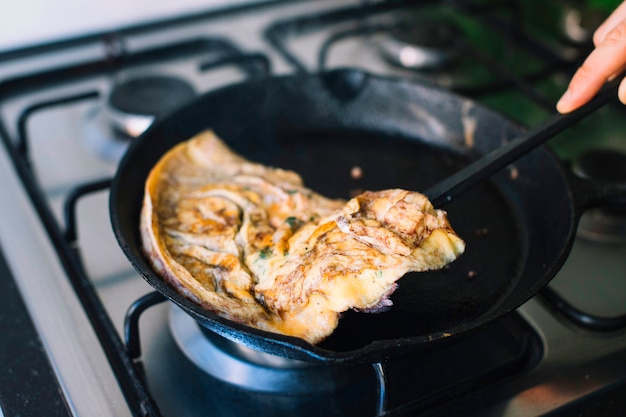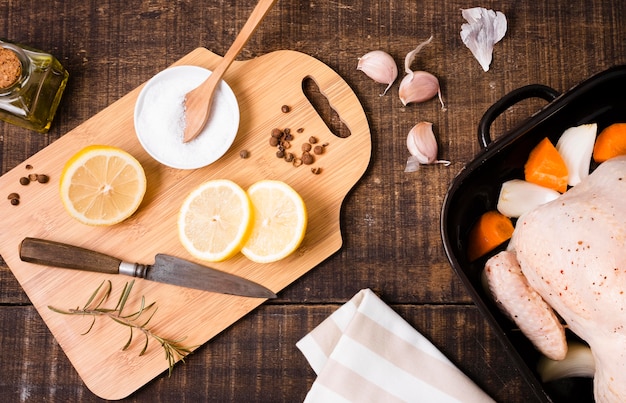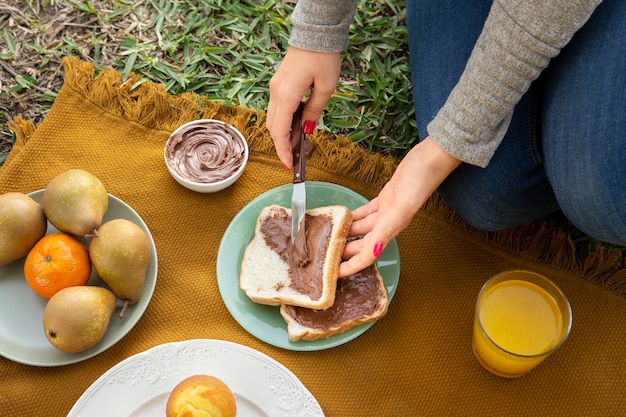Let's face it, tripe isn't exactly the most glamorous ingredient. It's not something you see every day at the supermarket, and the mere mention of it might make some people wrinkle their noses. But I'm here to tell you, tripe is a culinary diamond in the rough, waiting to be discovered. It's a versatile ingredient with a unique texture and flavour that can be absolutely divine when prepared correctly. I've had my fair share of disappointing tripe experiences, rubbery, bland, and downright off-putting. But trust me, when cooked well, it's a real treat. So grab a cuppa, settle in, and let's dive into the wonderful world of tripe.
(Part 1) The Basics of Tripe: What is it and Where do you Find it?

Firstly, what exactly is tripe? Well, it's simply the stomach lining of various animals, usually cattle or sheep. I know, it doesn't sound very appealing at first, but trust me, it's not as strange as it sounds. Imagine it like a blank canvas for flavour - it absorbs seasonings beautifully, making it perfect for stews, soups, and even stir-fries.
Where to Find It
Now, finding tripe might seem like a quest, but it's not as difficult as you might think. It used to be a common sight in butchers' shops, but these days, it's become a bit more of a specialty item. Fear not, the internet is your friend! A quick search for "tripe near me" or "tripe online" should give you some options. You can often find it in Asian supermarkets, butcher shops that specialize in offal, or online retailers.
If you're lucky enough to have a local market with a butcher stall, ask them if they stock tripe. It's always worth asking around your local butcher shops as well. You never know what culinary treasures they might have hiding in their fridges!
(Part 2) Types of Tripe: A Variety of Textures

You might be surprised to learn that there are actually different types of tripe, each with its own unique texture and flavour.
1. Honeycomb Tripe
Honeycomb tripe is the most common type, and it gets its name from its distinctive honeycomb-like appearance. It has a slightly chewy texture, which some people find a bit off-putting, but it's really quite nice when cooked properly. It's often used in stews and soups.
2. Book Tripe
Book tripe is another popular choice, named for its layered appearance, much like the pages of a book. It's a bit softer and more tender than honeycomb tripe, making it a good choice for stir-fries or braises.
3. Blanket Tripe
Blanket tripe has a smoother, more velvety texture. It's often used in Mexican cuisine, but it's also a great option for braising or stir-frying.
The best type for you depends entirely on your personal preference. If you're new to tripe, I'd suggest starting with honeycomb or book tripe. They're a bit more forgiving in terms of cooking time and texture.
(Part 3) Preparing Tripe: Getting Ready to Cook

Alright, so you've got your tripe. Now, how do you get it ready to cook? It's a little more involved than just tossing it in a pan. Here's a step-by-step guide:
1. Cleaning and Blanching
Tripe is often sold pre-cleaned, but it's always a good idea to give it a thorough rinse. Look for any bits of gristle or fat that need to be trimmed off. Once it's cleaned, you'll need to blanch it. Blanching involves boiling it in water for a few minutes to help remove any lingering odour. This step is really crucial as it makes the tripe more palatable.
2. Blanching Steps
Here's how to blanch it:
- Fill a large pot with water and bring it to a rolling boil.
- Add the tripe to the boiling water and cook for 5-10 minutes.
- Drain the tripe and rinse it under cold running water.
Once it's blanched, you can cut it into the size you need for your recipe.
(Part 4) Tripe Recipes: A World of Possibilities
Now for the exciting part - the recipes! Tripe is a remarkably versatile ingredient. Here are a few ideas to get you started:
1. Classic Tripe Stew
This is a real comfort food, perfect for a chilly evening. It's hearty, full of flavour, and surprisingly easy to make.
Here's what you'll need:
- 1 kg tripe, blanched and cut into cubes
- 2 tbsp olive oil
- 1 large onion, chopped
- 2 carrots, chopped
- 2 celery stalks, chopped
- 2 cloves garlic, minced
- 1 tbsp plain flour
- 1 tsp dried thyme
- 1 tsp dried oregano
- 500 ml beef stock
- Salt and pepper to taste
Instructions:
- Heat the olive oil in a large pot over a medium heat. Add the onion, carrot, and celery and cook until softened, about 5 minutes.
- Add the garlic and cook for 1 minute more.
- Stir in the flour, thyme, and oregano and cook for 1 minute.
- Add the beef stock and bring to a boil.
- Reduce the heat to low, cover, and simmer for 1 hour, or until the tripe is tender.
- Season to taste and serve hot with crusty bread.
This is just a basic recipe, of course. You can add other vegetables, such as potatoes, mushrooms, or parsnips, or even some chunks of beef for extra flavour.
2. Tripe and potato soup
Another classic, tripe and potato soup is a real comfort food. It's creamy, filling, and perfect for a chilly day.
Here's what you'll need:
- 500 g tripe, blanched and cut into small pieces
- 1 tbsp olive oil
- 1 large onion, chopped
- 2 cloves garlic, minced
- 1 kg potatoes, peeled and cubed
- 1.5 l chicken stock
- 100 ml double cream
- Salt and pepper to taste
Instructions:
- Heat the olive oil in a large pot over a medium heat. Add the onion and cook until softened, about 5 minutes.
- Add the garlic and cook for 1 minute more.
- Stir in the tripe and potatoes and cook for 5 minutes.
- Add the chicken stock and bring to a boil.
- Reduce the heat to low, cover, and simmer for 30 minutes, or until the tripe and potatoes are tender.
- Use an immersion blender to blend the soup until smooth.
- Stir in the cream and season to taste.
- Serve hot with a dollop of cream or a sprinkle of chopped parsley.
3. Tripe Stir-fry
For something a bit lighter, you can try a tripe stir-fry. It’s a quick and easy meal that’s packed with flavour.
Here's what you'll need:
- 500 g tripe, blanched and cut into thin strips
- 2 tbsp olive oil
- 1 onion, sliced
- 2 cloves garlic, minced
- 1 red pepper, sliced
- 1 green pepper, sliced
- 1 tbsp soy sauce
- 1 tsp ginger, grated
- 1/2 tsp chilli flakes (optional)
Instructions:
- Heat the olive oil in a large wok or frying pan over a high heat.
- Add the tripe and cook for 2-3 minutes, or until browned.
- Add the onion, garlic, peppers, soy sauce, ginger, and chilli flakes (if using) and cook for 5-7 minutes, or until the vegetables are tender.
- Serve hot with rice or noodles.
Feel free to experiment with different vegetables and seasonings. This is a great way to use up whatever you have in your fridge.
These are just a few ideas to get you started. The possibilities are endless when it comes to cooking tripe. Just remember, it's all about getting creative and having fun!
(Part 5) cooking tips and Tricks
Now that you've got some recipe ideas, let's discuss a few cooking tips and tricks to ensure your tripe comes out perfectly every time.
1. Don’t Overcook it
Tripe can become tough and rubbery if you overcook it. It's best to cook it until it's tender, but not mushy. You want it to have a bit of bite to it.
2. Slow and Steady Wins the Race
Tripe is a tougher cut of meat, so it needs to be cooked slowly and gently. This is why stewing or braising is the best way to cook it. You can also use a slow cooker or pressure cooker.
3. Use Flavourful Liquids
Tripe absorbs flavours beautifully, so it’s important to use a flavorful liquid when cooking it. Beef stock, chicken stock, or even a good quality tomato sauce will work well.
4. Don’t Be Afraid of Spices
Tripe can handle bold flavours, so don’t be afraid to experiment with spices. Try using cumin, coriander, paprika, or even a bit of chilli flakes for a kick.
Remember, these are just a few tips to get you started. The best way to learn how to cook tripe is to experiment and find what you like best.
(Part 6) Tripe: A Culinary Heritage
Tripe has a long and fascinating history. It’s been a staple food in many cultures for centuries. In some parts of the world, it’s considered a delicacy.
1. Traditional Tripe Dishes
Here are a few traditional tripe dishes from around the world:
| Dish | Origin | Description |
|---|---|---|
| Tripas a la Madrile??a | Spain | A stew made with tripe, chickpeas, and chorizo. It is often served with crusty bread. |
| Mondongo | Latin America | A hearty soup or stew made with tripe, beef, vegetables, and spices. It can be served with rice or a side of plantains. |
| Tripe and Onions | England | A classic British dish made with tripe, onions, and sometimes potatoes. It is often served with a gravy and mashed potatoes. |
| Hachis Parmentier | France | A shepherd's pie with a tripe topping. It is often served with a green salad. |
2. A Sustainable Choice
Tripe is also a sustainable choice. It’s a by-product of the meat industry, which means it’s often overlooked and underutilized. By using tripe, you’re helping to reduce food waste and support a more sustainable food system.
(Part 7) The Controversy of Tripe
Now, I know some of you might be a bit hesitant about trying tripe. I get it. It’s not the most conventional ingredient. But I’m here to tell you that it’s definitely worth giving it a go. It’s really quite delicious, and it’s a great way to experience a different side of food.
Here are a few common concerns people have about tripe:
1. The "Offal" Factor
Some people are put off by the fact that tripe is an offal. But let’s be real, offal is just another part of the animal. It’s a perfectly good source of protein, vitamins, and minerals. And if you can stomach liver and kidneys, there’s no reason why you can’t enjoy tripe.
2. The Texture
The texture of tripe can be a bit of an acquired taste. It’s chewy and a bit bouncy. But if you cook it properly, it can be incredibly satisfying.
3. The Smell
Some people find the smell of tripe to be a bit off-putting. This is often due to the fact that it hasn’t been cleaned properly. Blanching it helps to remove any lingering odour, so don’t worry about that.
I understand that not everyone will be a fan of tripe. But I encourage you to give it a try at least once. You might just surprise yourself.
(Part 8) FAQs
Let's address your burning questions about tripe!
1. Is tripe healthy?
Yes, tripe is a great source of protein, iron, and zinc. It’s also relatively low in calories and fat.
2. How long does tripe last in the fridge?
Tripe will last in the fridge for 3-4 days. You can also freeze it for up to 3 months.
3. How do I know if tripe is bad?
Tripe should have a fresh, slightly sweet smell. If it smells sour or ammonia-like, it’s gone bad. You should also look for any signs of discoloration or slime.
4. Can I use tripe in other dishes?
Absolutely! You can use tripe in a variety of dishes, including stews, soups, stir-fries, and even pasta sauces.
5. What are some good ways to serve tripe?
Tripe can be served with a variety of sides, including potatoes, rice, noodles, bread, and salad.
(Part 9) Conclusion
There you have it, the ultimate guide to cooking tripe! It’s not for everyone, but if you’re looking for a new culinary adventure, I highly recommend giving it a go. It’s a delicious, sustainable, and surprisingly versatile ingredient. And who knows, you might just become a tripe convert!
Everyone is watching

Corn on the Cob: The Ultimate Guide to Perfectly Cooked Ears
Healthy MealsAh, corn on the cob. Just the name evokes images of sunny days, barbecues, and that sweet, juicy flavour that ...

Perfect Pork Roast Oven Cooking Time: A Guide to Delicious Results
Healthy MealsThere's something truly satisfying about a perfectly roasted pork. The aroma alone is enough to make your mout...

Ham Cooking Time: How Long to Bake, Smoke, or Boil a Delicious Ham
Healthy MealsAh, ham. It's a classic, isn't it? A real crowd-pleaser, especially around holidays. And when done right, it'...

Scallops: The Ultimate Guide to Perfect Cooking
Healthy MealsAh, scallops. Those delicate, sweet, and utterly delicious morsels of the sea. They hold a special place in my...

Spaghetti Squash: The Ultimate Guide to Cooking and Serving
Healthy MealsRemember that time you saw spaghetti squash at the supermarket, looking all bumpy and strange, and thought, "W...
